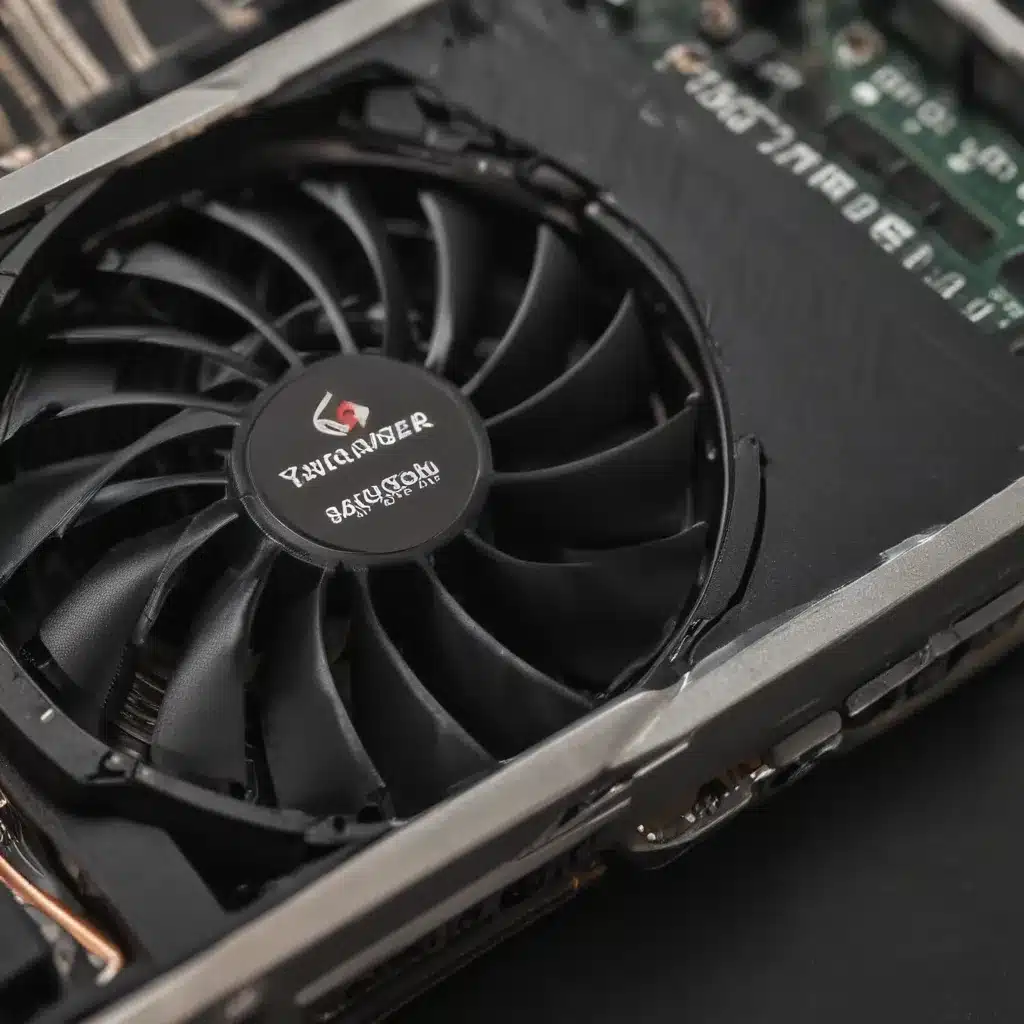The Quest for the Perfect Fan Curve
As a self-proclaimed PC enthusiast, I’ve always had a love-hate relationship with fan curves. On one hand, they’re the key to unlocking whisper-quiet operation from my rig, allowing me to game in peace without sounding like I’m sitting next to a jet engine. But on the other hand, finding the perfect fan curve can feel like embarking on a quest through the treacherous lands of temperature thresholds, noise levels, and performance trade-offs.
Recently, I decided to tackle this challenge head-on, determined to conquer the art of graphics card fan tuning and share my findings with fellow PC builders. Join me on this journey as we explore the ins and outs of crafting the ideal fan profile for cool and quiet GPU operation.
Understanding the Basics of Fan Curves
Before we dive into the nitty-gritty, let’s start with the fundamentals. A fan curve, simply put, is a graphical representation of how your GPU’s fans should behave based on temperature. [1] It’s a nifty tool that allows you to customize the fan speed at different temperature thresholds, ensuring your graphics card stays frosty without sounding like a leaf blower.
Now, you might be tempted to just crank those fans up to 100% and call it a day, but that’s a surefire way to end up with a computer that sounds like it’s about to take off. Instead, the key is finding the perfect balance between cooling performance and noise level.
The Perils of Linear Fan Curves
One common mistake I see a lot of new PC builders make is setting up a linear fan curve, where the fan speed increases steadily with temperature. [2] While this might seem like a logical approach, it can actually lead to more problems than it solves.
Imagine this scenario: your GPU is happily chugging along, keeping things cool at a nice, comfortable 50°C. Suddenly, a demanding game kicks in, and the temperature starts to rise. Your fans, dutifully following their linear curve, start to ramp up, going from 50% to 70% to 90% and beyond. The result? A symphony of whirring and whining that drowns out even the most epic in-game soundtrack.
The Art of the Stepped Fan Curve
Instead of a linear approach, I’ve found that a stepped fan curve is the way to go for truly quiet operation. The idea is simple: you define a series of temperature thresholds, and at each one, the fans kick up to a specific speed. [3] This way, the fans stay at a relatively consistent speed until the temperature reaches a point where they need to kick it up a notch.
For example, you might have your fans running at 50% until the GPU hits 60°C, then ramp them up to 75% until 70°C, and finally crank them to 100% once the temperature reaches 80°C. This way, you avoid the constant speed fluctuations that can be so annoying, and your rig stays cool and quiet for the majority of the time.
Embracing the Zero-RPM Zone
One neat trick I’ve discovered is the concept of a “zero-RPM zone” for your GPU fans. [4] The idea is simple: you set a temperature threshold, say 50°C, below which the fans don’t spin at all. This not only keeps things super quiet during lighter workloads, but it also helps to extend the lifespan of your fans by reducing their wear and tear.
Of course, you’ll need to be careful not to set this threshold too high, as you don’t want your GPU to overheat. But with a bit of experimentation, you can find the sweet spot where your fans remain blissfully silent until the temperature starts to climb.
Putting It All Together: My Personalized Fan Curve
After countless hours of tinkering and testing, I’ve settled on a fan curve that I’m truly proud of. [5] It goes a little something like this:
| Temperature (°C) | Fan Speed (%) |
|---|---|
| 0 – 50 | 0 |
| 50 – 60 | 50 |
| 60 – 70 | 75 |
| 70+ | 100 |
This setup keeps my GPU cool and quiet for the majority of the time, with the fans only kicking into high gear when the temperature starts to climb above 70°C. And thanks to that zero-RPM zone, I can enjoy the sweet, sweet sound of silence during lighter tasks.
Of course, your mileage may vary depending on your specific hardware and cooling setup. [6] But I hope that this guide has at least given you a solid starting point to experiment with your own fan curve tuning. After all, the perfect balance of cool and quiet is out there, just waiting to be discovered.
Good luck on your quest, my fellow PC enthusiasts! May your graphics cards stay frosty and your gaming sessions blissfully serene.
[1] https://www.asus.com/campaign/GPU-Tweak-III/
[2] https://www.reddit.com/r/buildapc/comments/dz2uih/tip_for_new_builders_case_and_cpu_fan_curves/
[3] https://forum.corsair.com/forums/topic/178430-setting-up-a-proper-silent-fan-curve-without-compromising-cooling/
[4] https://community.amd.com/t5/drivers-software/20-2-2-fan-pwm-setting-not-going-lower-than-26/m-p/352258
[5] https://www.overclock.net/threads/is-it-really-ok-to-use-zero-rpm-fan-tuning.1808256/
[6] https://community.amd.com/t5/drivers-software/my-experience-with-an-amd-graphics-card-and-the-zero-rpm-feature/td-p/521226













